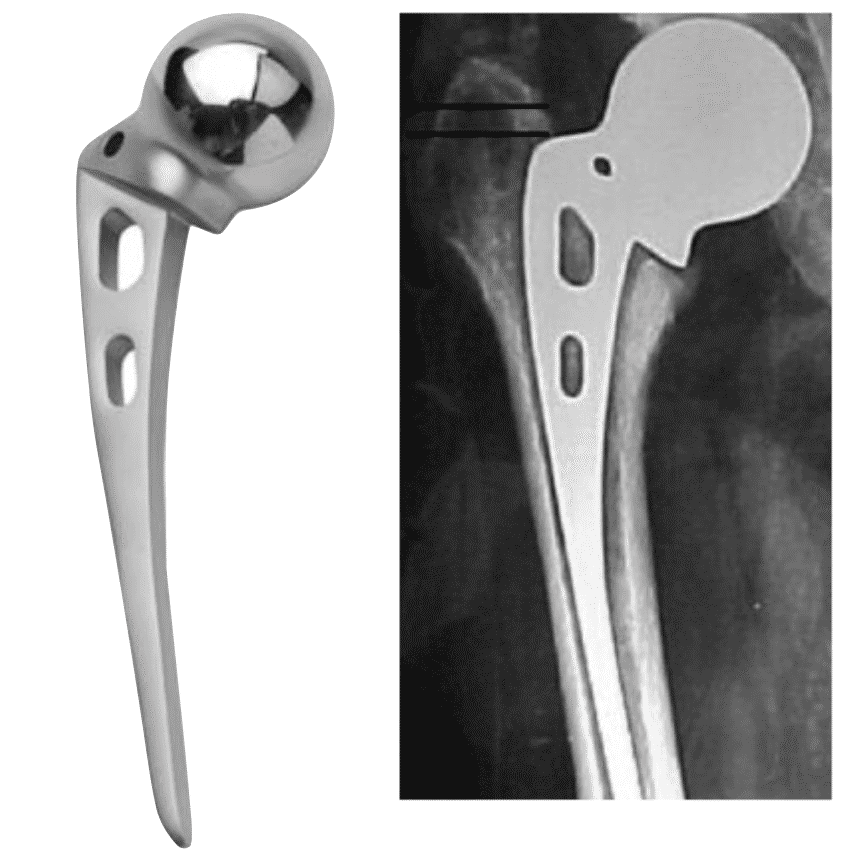Both Austin Moore and Thompson Prosthesis are unipolar hemiarthroplasty devices. They serve as an endoprosthesis to replace the function of an osteoarthritic hip.
The credit to developing Austin Moore prosthesis goes to Dr. Austin Talley Moore of USA. He first used in September 28, 1940 . The original implant consisted a femoral stem combined with Vitallium head.
Parts of Austin Moore Prosthesis are head, neck and stem. The head in globular to simulate the femoral head. The neck has a shoulder and an eye. The stem is the part that inserts into the femoral medullary canal. There are two holes in the stem, which facilitates bone ingrowth. Additionally, the stem has curve, to ensure hip in neutral or valgus position.

On the other hand, credit for Thompson prosthesis goes to Dr. Frederick Roeck Thompson (1907–1983), another American orthopedic surgeon. It was developed in 1950. Comparing with Austin Moore Prosthesis in first look, it has an acute angled collar. There are no holes and it requires cement for fixation.

Differences between Austin Moore and Thompson Prosthesis
The Austin Moore Prosthesis (AMP) has fenestrations, absent in its counterpart. Bone growth occurs through fenestrations aid anchorage to the bone
Thompson Prosthesis (TP) is devoid of any fenestration
Calcar is absent in AMP. Hence, one should use it only in the cases, where calcar is present at least 1.5cm
Calcar is present in TP. Hence can be used in cases with complete fracture of neck and absence of calcar
The collar is transverse and sits over the calcar in AMP, while in Thompson the collar is at and acute angle to the stem. It’s inherent design eases to fit it in the inter-trochanteric line.
Additionally, the Austin Moore prosthesis has an eye and a shoulder. Eye facilitates for maintaining anteversion of femur and to facilitate removal. The shoulder on the other hand fits at the medial aspect of the greater trochanter and prevents rotation. The Thompson prosthesis lacks these features.
Summarizing the differences between Austin Moore and Thompson
We endeavor to tabulate these differences.

